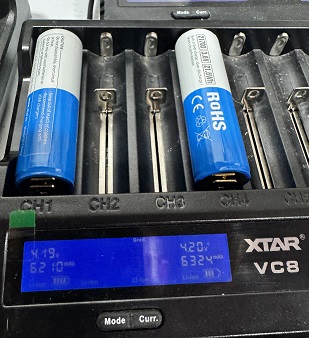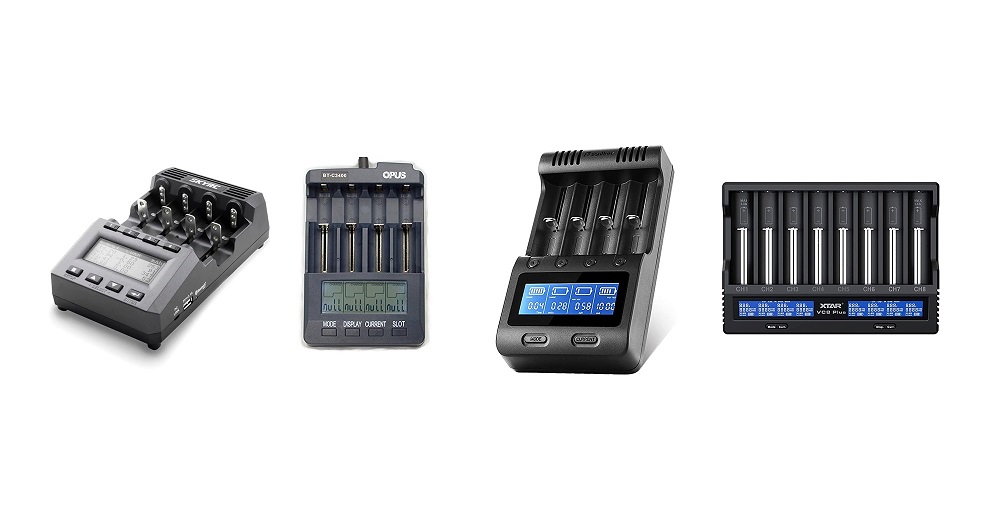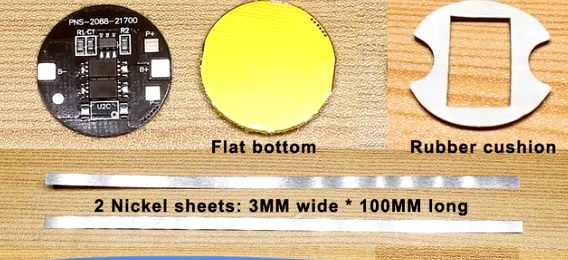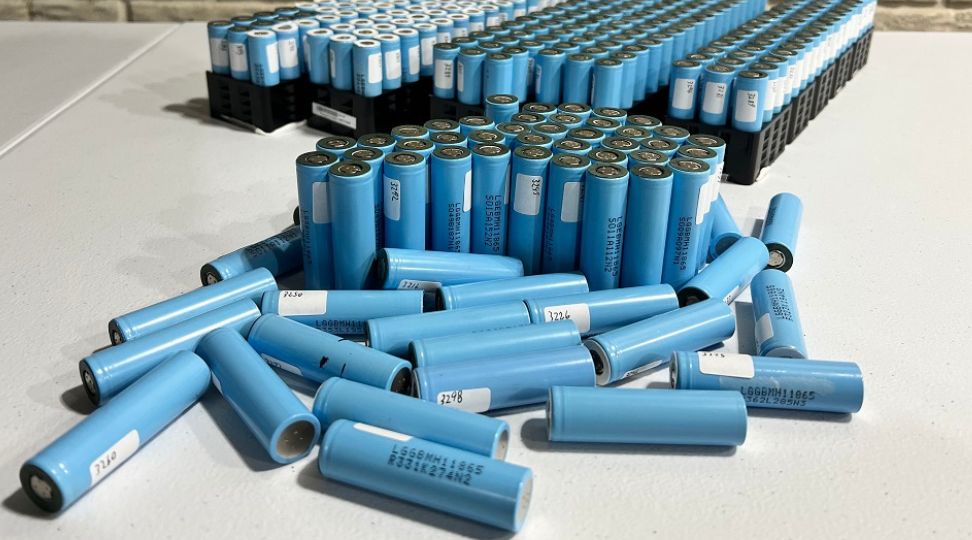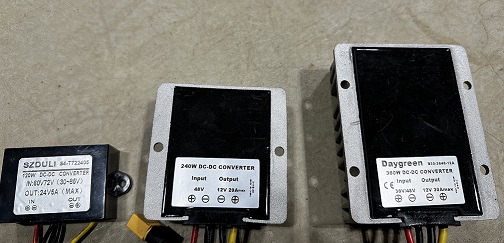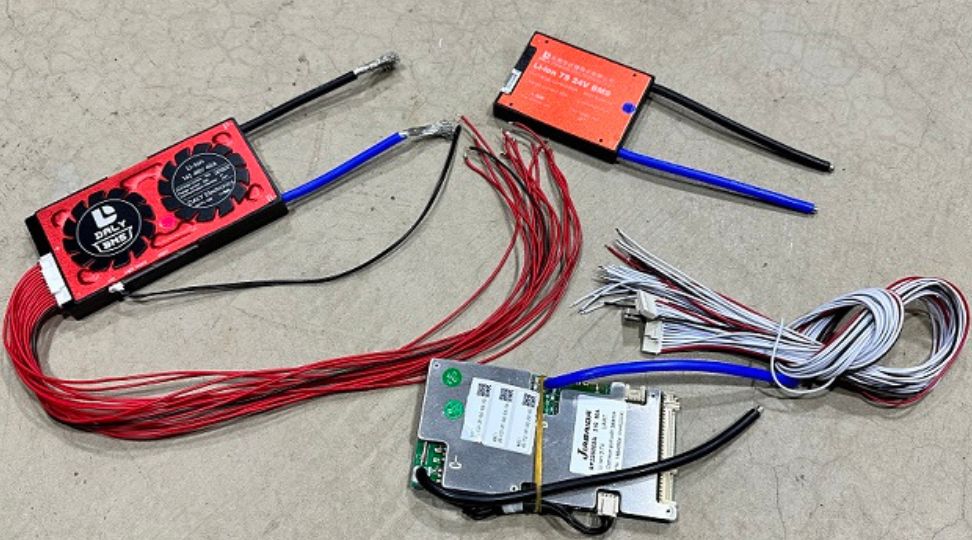
What is the Highest Capacity 21700 Cell
The highest capacity 21700 is the XTAR 21700 6000mAh. The closest runner-ups are Vapcell's F60 (6000mAh) and BAK's 5.5Ah (5500mAh) cell. The XTAR 6000mAh cell is not particularly hard to come by, but it is relatively expensive at over $15 per cell. If you're looking for alternatives, the Vapcell's F60 and BAK 5.5Ah are good options, though they are slightly lower in capacity.
These are the real figures for the highest capacity 21700, so if you see manufacturers claiming capacities above these figures, they may be misleading or inaccurate. So, make sure to verify capacity claims through trusted sources.
These advancements in 21700 capacity reflect the rapid development of lithium ion battery cell technology. These new high capacity 21700 cells make lithium ion batteries even better for demanding applications like portable power tools, EVs, and high-drain devices.
Where To Buy The Highest Capacity 21700?
The XTAR 6000mAh cell can be purchased directly from XTAR. It's an expensive cell at over $15 per unit, but they are the highest capacity 21700 cells on the market. If the price is a bit too much, you may want to look into the Vapcell's F60 (6000mAh) and BAK's 5.5Ah (5500mAh) cells as they are solid options and don't have a built-in protection board. When comparing purchase options, XTAR may be the top choice if maximum capacity is a priority, while Vapcell F60 and BAK 5.5Ah are close runner-ups offering similar high-capacity performance at potentially better prices along with being more flexible in their application.
[[ aff type=aff ~ link=https://shrsl.com/4qxoy ~ title=`Xtar 6000mAh ~ image=Xtar-6000MAH-21700-cell.jpg ~ description=`The highest capacity 21700 we have been able to find on the market!! 6100-6300mAh in our testing. ` ~ height=small ~ buttonText=`Check Price` ]]
XTAR 6000mAh 21700
XTAR's 6000mAh battery is currently the highest capacity 21700 on the market. In testing at a 500mA discharge rate (equivalent to 0.083C, calculated as 500mA ÷ 6000mAh), this cell has consistently delivered between 6100mAh and 6300mAh, making it an excellent choice for long runtime applications. It's important to consider, however, that standard capacity tests are typically run at 0.2C, which would be 1200mA for a 6000mAh cell. So, that explains why we are getting test results much higher than the rated capacity.
Xtar also offers the highest capacity 18650 cell we have tested!
It's not all sunshine and rainbows, though. Even though it is the highest capacity 21700, this cell has a built-in protection board that limits maximum discharge to 10 amps and makes the cells difficult to put in a series configuration. The protection board can also make it difficult to fit the cell into some testers and devices.
Can Cells With A Built-In Protection Board Be Used In Series?
It will work, but you have to be very careful, so it's not recommended. This is because in a series configuration, if a cell fails or its protection board triggers a shutoff, the MOSFETs in that cell’s protection board enter a high-resistance (off) state. This introduces a large voltage difference between the drain and source of the MOSFETs in the shut-off cell due to the series arrangement.
The entire voltage of the remaining active cells in the pack is now applied across the MOSFETs of the failed or disconnected cell. Since the MOSFETs are only rated for single-cell voltage, this sudden exposure to the full pack voltage can cause them to exceed their tolerance and fail. This vulnerability makes protected cells poorly suited for series configurations, as a single cell’s failure can lead to over-voltage damage across its protection circuit, compromising the whole pack.
21700 Battery Capacities Over Time
The development of 21700 batteries has paralleled the trend in 18650 cells, with a steady increase in capacity thanks to advances in battery chemistry and manufacturing. Initially, 21700 batteries were produced with capacities of around 3000mAh to 4000mAh. Over time, new designs and improved materials have led to significant capacity improvements, culminating in today’s 6000mAh cells. However, even with continued progress, we have yet to see a commercially viable 21700 cell exceed the 6000mAh mark.
Determining 21700 Battery Capacity
Battery capacity is measured in milliampere-hours (mAh) or amp-hours (Ah), which indicates how long a battery can deliver a given amount of current before it dies. A 6000mAh battery, for instance, can theoretically supply 1000 milliamps (1 amp) for six hours, or 2000 milliamps (2 amps) for three hours, and so on.
To determine battery capacity, a standardized testing process is used. The battery is subjected to a constant discharge current until it is depleted, allowing the total capacity to be measured. It’s worth noting that this test is typically performed at a modest discharge rate (between 300 and 1000mA). High discharge rates can cause a reduction in the effective capacity of the battery due to the heat generated during high current flow.
Beware of Inflated Capacity Claims
As with 18650 batteries, you need to be wary of dubious claims when buying 21700 batteries. Some manufacturers and vendors will market products with incredibly high capacity numbers that are simply not achievable with current technology. If you see a 21700 battery claiming a capacity above 6000mAh, be skeptical, as this is beyond what’s currently feasible for this size of lithium-ion cell.
Listings like this are typically scams, where manufacturers rely on misleading numbers to entice buyers. The cells may weigh more due to filler material, such as sand, to mimic the heft of a genuine high-capacity battery. Often, these batteries will also have significantly higher internal resistance and produce less current than advertised, making them unsuitable for high-drain applications.
Beyond Capacity: Current Capabilities of 21700 Batteries
When looking for the highest capacity 21700 battery, there are still other important factors to consider other than the amount of energy that can be stored in the cell. Discharge rate is also important, especially for applications that require substantial power draw. Generally, higher-capacity batteries, like the XTAR 6000mAh, tend to have lower maximum discharge rates. In contrast, cells such as the Samsung 50S and Molicel P42A can handle discharge rates of up to 25A and 45A respectively, though they come with lower overall capacities compared to the XTAR 6000mAh.
If you need batteries for high-drain devices, you may want to prioritize those with higher current ratings that don't have a protection board, even if it means compromising on overall capacity. However, for devices where a steady, moderate power draw is all that’s required, the XTAR 6000mAh is the best 21700 for the longest runtime.
The Future of 21700 Battery Technology
It is expected that further advancements in battery chemistry will lead to even higher capacity 21700 batteries in the future. The next major development might come with graphene-enhanced lithium-ion cells or entirely new chemistries that can push beyond the current 6000mAh ceiling. Until those products become available, we’re just going to have to remember to be cautious of exaggerated claims and to purchase batteries from trusted manufacturers and vendors.
What is the Maximum Capacity of a 21700 Battery?
Currently, the maximum capacity for a commercially available 21700 battery is 6000mAh, as seen with XTAR’s 21700 model. This capacity is the highest verified figure on the market, with no reliable commercial options exceeding this specification as of the date of this writing.
What is the Best 21700 Cell?
The “best” 21700 battery capacity depends on the intended use. If capacity is the most important metric, then the XTAR’s 6000mAh is definitely the best 21700 cell. If, however, your application prioritizes both a mix of high capacity and high current, you may want to consider something like the Samsung 50S or Molicel P42A.
What is the Battery Capacity of Tesla 21700?
Tesla’s 21700 battery cells, commonly used in their Model 3, have a capacity of approximately 4800mAh to 5000mAh per cell. These cells balance capacity with performance, featuring an optimized chemistry that supports both energy density and the high discharge rates necessary for electric vehicle applications.
What is the Theoretical Highest Capacity 21700 Battery?
The theoretical highest capacity for lithium-ion batteries is limited by the chemistry and materials used. For the 21700 format, the maximum achievable capacity with current technology is around 6000mAh. However, research into alternative chemistries, such as lithium-metal and graphene-based cells, suggests that future batteries may push well beyond this limit, potentially achieving even higher energy densities if these new technologies prove viable.
As battery manufacturers push the boundaries of 21700 battery technology, several new developments indicate promising strides in both capacity and discharge rates. Battery research institutes in Asia and Europe are testing new 21700 prototypes that utilize lithium-silicon anodes, achieving an energy density 10-15% higher than conventional lithium-ion counterparts. These prototypes reportedly reach capacities around 6500mAh in lab settings; however, none have yet reached commercial viability.
Upcoming Graphene-Enhanced Models
Several manufacturers have also announced plans to integrate graphene-enhanced lithium-ion technology into the 21700 format within the next few years. Graphene's high conductivity may enable these batteries to support faster charging rates and improve cycle life. Though these graphene-enhanced cells are not yet available to consumers, initial testing indicates capacities that could reach up to 7000mAh, with discharge rates in the several 10s of amps, putting them on par with the Samsung 50S and Molicel P42A.
How Much Difference Does a 6000mAh Cell Really Make?
Here’s how higher-capacity 21700 cells impact battery pack performance in two examples—a 3S10P and a 13S4P configuration—demonstrating the advantages of choosing 6000mAh cells over 5000mAh cells for increased capacity and energy storage.
Example 1: 3S10P Configuration
In a 3S10P setup:
- Using 6000mAh Cells (XTAR 6000mAh):
- Each parallel group of 10 cells has a combined capacity of 60,000mAh.
- Total capacity: 60,000mAh at 10.8V (3.6V nominal per cell × 3 series cells).
- Total energy: 648Wh (60,000mAh × 10.8V).
- Using 5000mAh Cells (e.g., Samsung 50G):
- Each parallel group of 10 cells yields 50,000mAh.
- Total capacity: 50,000mAh at 10.8V.
- Total energy: 540Wh (50,000mAh × 10.8V).
With 6000mAh cells, the 3S10P battery pack achieves a 20% higher capacity (from 50,000mAh to 60,000mAh) and energy (from 540Wh to 648Wh), resulting in longer runtime for devices that prioritize endurance.
Example 2: 13S4P Configuration
In a 13S4P setup:
- Using 6000mAh Cells (XTAR 6000mAh):
- Each parallel group of 4 cells yields 24,000mAh.
- Total capacity: 24,000mAh at 46.8V (3.6V nominal per cell × 13 series cells).
- Total energy: 1,123.2Wh (24,000mAh × 46.8V).
- Using 5000mAh Cells (e.g., LG M50):
- Each parallel group of 4 cells yields 20,000mAh.
- Total capacity: 20,000mAh at 46.8V.
- Total energy: 936Wh (20,000mAh × 46.8V).
Here, using 6000mAh cells offers a 20% increase in both capacity and energy, from 20,000mAh (936Wh) to 24,000mAh (1,123.2Wh). This is ideal for high-voltage applications needing extended operation without frequent recharges.
Across both configurations, opting for 6000mAh cells over 5000mAh cells results in a consistent 20% increase in total battery capacity and stored energy. This provides significant runtime benefits, whether in moderate-capacity (3S10P) or high-voltage (13S4P) applications, enhancing performance and efficiency in devices requiring sustained power delivery.
Protection Board
I have bad news. There is a problem with the above examples. One thing we don't like about this cell is that we can't seem to find any that don't have the protection board preinstalled. The protection board that helps prevent overcharging, over-discharging, and short circuits. While these boards are essential for safety, they can complicate configurations that require connecting multiple cells in series and parallel, as the protection circuitry isn't rated for the potential voltages that it will see when put in series.
The Verdict
So, what is the highest capacity 21700? In today’s market, the XTAR 21700 6000mAh takes the lead with the Vapcell’s F60 (6000mAh) and BAK's 5.5Ah (5500mAh) following closely. While the XTAR 6000mAh battery is readily available, it commands a premium price at over $15 per cell. For those seeking alternatives, Vapcell F60 and BAK 5.5Ah provide slightly lower capacities but offer competitive performance at potentially better prices.
As 21700 battery technology continues to evolve, these high-capacity cells highlight the rapid progress in lithium-ion technology, making them ideal for high-demand applications such as EVs, power tools, and other devices requiring sustained power. However, it’s crucial to verify capacity claims, as some manufacturers may exaggerate figures beyond current capabilities. Presently, XTAR’s 6000mAh is the maximum verified capacity in this format, though upcoming advancements in battery chemistry and materials suggest that even higher capacities may soon be achievable.
Oh, by the way. The reason the Vapecell is put second after the XTAR is because, well, it's a Vapcell and that company is known to produce knock-off cells and rewraps sold as new. For that reason, I’m going to have to pretty harshly doubt any capacity claims until we get our hands on some of them.
